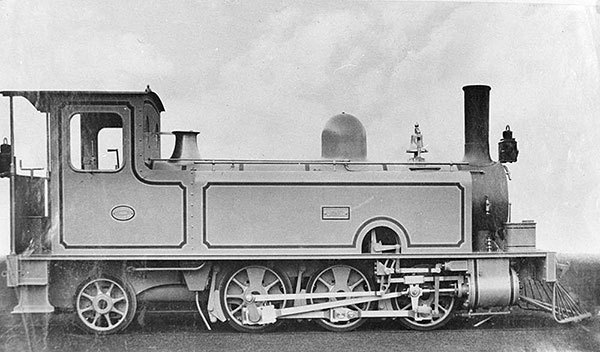Queensland Railways 6D13 Tank Engine

These days when we think of coal trains in Queensland we think of trains with high-horsepower locos in multiple lashups, distributed power and long long strings of hoppers … but things were different back in the late 1800s.
Back in 1882 this loco was regarded as state-of-the-art for coal haulage … at least as far as the Queensland Coal Company was concerned.
The Queensland Coal Company had a number of mines on what was then known as the Burrum field … an extensive area of coal mining around the towns of Torbanlea and Howard just to the north of Maryborough. There were pits dotted everywhere … some within sight of the Torbanlea railway yards and others much further out.
Today there isn’t a coal mine in sight anywhere around those villages but back in the late 1800s around 25% of Queensland’s coal supplies passed through the rail yard at Torbanlea … and most of that came into the yard by horse-drawn wagons.
However there were three mines that had rail access … one short 3’6″ line that ran through the middle of the village to the west that appears to have been shunted by QR … a short narrow gauge line that ran to the south-west of the village … and a 3km line that ran almost due east of the yard along the side of what is now the Torbanlea showgrounds and race track.
This last line was built by the Queensland Coal Company to serve one of their bigger pits and to haul the hoppers in from the mine to interchange sidings the company ordered two 0-6-2 tank locos from Nielsen & Co of Glasgow.
These two steam engines duly arrived in Queensland in 1882 and the company named them ‘Lionel’ (b/n 2826 of 1882) and ‘Iron’ (b/n 2827 of 1882)
There are conflicting reports regarding the engines once they arrived in Australia. Some sources suggest that the locos were too heavy for the branch line to the mine while other reports suggest that the cost of the locomotives was too much for the company and offered them for sale as soon as they arrived.
In 1884 both steam engines passed into Queensland Railways ownership. ‘Lionel’ … the locomotive pictured here … entered service 25 February 1884 and ‘Iron’ entered service on 14 March 1884. In Queensland Railways service the engines were designated the 6D13 Class and carried numbers 70 and 71 respectively.
The fact that they appear not to have been sold till 1884 might suggest that the first report is perhaps more accurate.
If these two engines were sold because they were problematic then things didn’t improve during their time with the Queensland Railways either. They proved to be unstable at anything approaching a mainline speed and despite extra counter weights being added in 1887 the problem does not seem to have been corrected.
By 1888 both engines had been relegated to shunting duties.
Ten years later Lionel hit the headlines for all the wrong reasons when it’s boiler exploded while shunting at Roma Street. Fortunately no one was killed but both the driver and the fireman were injured.
In 1903 both engines were reboilered but there was no increase in boiler pressure. Both engines of the 6D13 Class were withdrawn in 1926 … ‘Lionel’ was last used in April of that year and ‘Iron’ was withdrawn in June.
Technical details
| Wheel arrangement | 0-6-2T |
| Driving wheel diameter | 36in |
| Boiler pressure | 120lb |
| Cylinders | 13x18in |
| Tractive effort | 8,110lb |
| Coal capacity | 1.25 tons |
| Water capacity | 600 gallons |
| Weight | 25.25 tones |
| Valve gear | Walschaerts |
References
Photo courtesy of State Library of Queensland
Technical & historical details: http://www.qrig.org
and from my own research into the Burrum coal fields